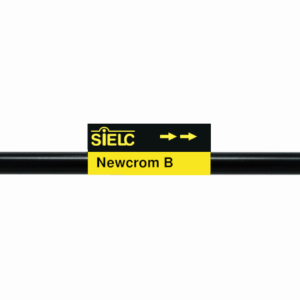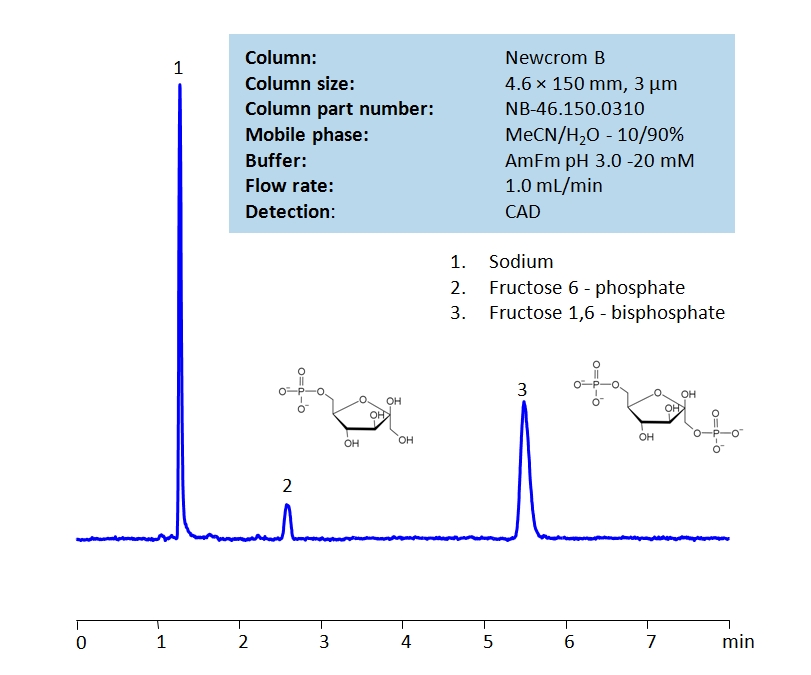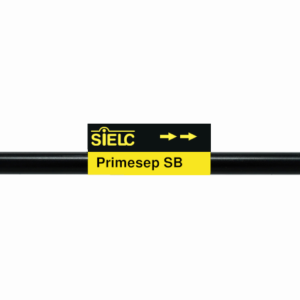| CAS Number | 6814-87-5 |
|---|---|
| Molecular Formula | C6H13O9P |
| Molecular Weight | 260.135 |
| InChI Key | GSXOAOHZAIYLCY-HSUXUTPPSA-N |
| LogP | -4.3 |
| Synonyms |
|
Applications:
HPLC Method for Analysis of Glucose 6-phosphate and Fructose 6-phosphate on Newcrom B Column
November 30, 2022
HPLC Method for Analysis of Glucose 6-Phosphate, Fructose 6-Phosphate on Newcrom B Column by SIELC Technologies.
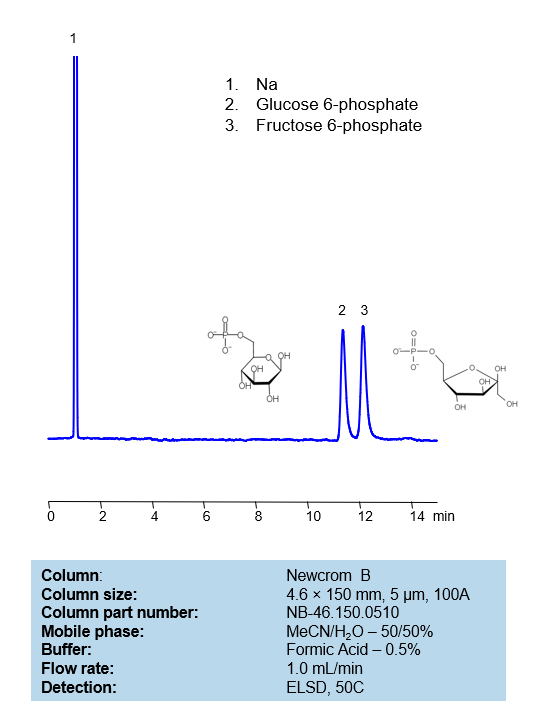
Glucose 6-phosphate, also known as Robison ester, is a glucose sugar with the chemical formula C6H13O9P. It is a derivative of glucose that forms during cellular metabolism. It is also produced during the breakdown of glycogen polymers.
Glucose 6-phosphate is first formed by cells to ensure it does not diffuse out of the cell, and then through the process of glycolysis, it’s isomerized into Fructose 6-phosphate.
Fructose 6-phosphate, known as Neuberg ester, is a derivatives of fructose that forms during cellular metabolism with the chemical formula C6H13O9P. It’s alternate name comes from the biochemist, Carl Neuberg, who discovered that the compound was produced during hydrolysis of fructose 2,6-biphosphate.
These 2 phosphorylated sugars can be retained, separated, and analyzed on a mixed-mode Newcrom B column with a mobile phase consisting of water, Acetonitrile (MeCN), and Formic acid (FA). This analytical method can be analyzed via any evaporative detector, including ELSD, CAD, and ESI-MS with high resolution and peak symmetry.
Condition
| Column | Newcrom B, 4.6 x 150 mm, 5 µm, 100 A, dual ended |
| Mobile Phase | MeCN – 50% |
| Buffer | Formic Acid – 0.5% |
| Flow Rate | 1.0 ml/min |
| Detection | ELSD, 50C |
| Peak Retention Time | 11.4, 12.2 min |
Description
| Class of Compounds | Sugar |
| Analyzing Compounds | Glucose 6-Phosphate, Fructose 6-Phosphate |
Application Column
Newcrom B
Column Diameter: 4.6 mm
Column Length: 150 mm
Particle Size: 5 µm
Pore Size: 100 A
Column options: dual ended
Glucose 6-Phosphate

HPLC Determination of Fructose 1,6 Bisphosphate on Newcrom B Column
May 13, 2021
HPLC Method for Fructose 1,6 Bisphosphate, Phosphate, Fructose 6-Phosphate on Newcrom B by SIELC Technologies
High Performance Liquid Chromatography (HPLC) Method for Analysis of Fructose 1,6 Bisphosphate, Phosphate, Fructose 6-Phosphate.
Fructose 1,6-biphosphate, alternatively known as Harden-Young ester, is the main form glucose and fructose take when they enter cells. It is a key component of the glycolysis metabolic pathway and is the product of the phosphorylation of fructose 6-phosphate. It has the chemical formula C6H14O12P2.
Using a Newcrom B mixed-mode column and a mobile phase consisting of water and acetonitrile with an ammonium formate (AmFm) buffer, Fructose 1,6-bisphosphate can be retained, separated (from fructose 6-phosphate), and measured. Fructose 1,6 bisphosphate can be detected using charged aerosol detection (CAD) with high resolution.
| Column | Newcrom B, 4.6 x 150 mm, 3 µm, 100 A, dual ended |
| Mobile Phase | MeCN/H2O – 10/90% |
| Buffer | AmFm – pH 3.0 – 20 mm |
| Flow Rate | 1.0 ml/min |
| Detection | CAD |
| Class of Compounds |
Sugar Phosphate |
| Analyzing Compounds | Fructose 1,6 Bisphosphate, Phosphate, Fructose 6-Phosphate |
Application Column
Newcrom B
Column Diameter: 4.6 mm
Column Length: 150 mm
Particle Size: 3 µm
Pore Size: 100 A
Column options: dual ended
Fructose 6-Phosphate
Phosphate

HPLC Separation of Sugar Phosphates
October 14, 2010
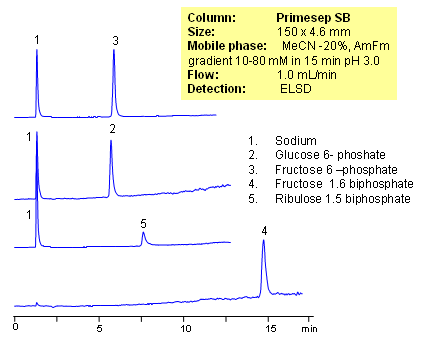
Sugar phosphates occur in biological systems. Sugar phosphates are parts of two metabolic pathways: glycolisis and pentose phosphate pathways. One of the purposes of sugar phosphates is to store and transfer energy in cells. Because of the presence of sugar fragment and phosphate moiety these molecules are very polar in nature. Mixed-mode chromatography was applied for separation of glucose and fructose phosphates and diphosphates. Compounds are separated based on anion-exchange properties with diphosphates retaining longer than mono phosphates. Monitoring is done by ELSD.
| Column | Primesep SB, 4.6×150 mm, 5 µm, 100A |
| Mobile Phase | MeCN/H2O – 20/80% |
| Buffer | AmFm – pH 3.0 |
| Flow Rate | 1.0 ml/min |
| Detection | ELSD |
| Class of Compounds |
Sugars |
| Analyzing Compounds | Sodium, Glucose 6- phosphate, Fructose 6 –phosphate, Fructose 1.6 biphosphate, Ribulose 1.5 biphosphate |
Application Column
Primesep SB
The Primesep family of mixed-mode columns offers a wide variety of stationary phases, boasting unprecedented selectivity in the separation of a broad array of chemical compounds across multiple applications. Corresponding Primesep guard columns, available with all stationary phases, do not require holders. SIELC provides a method development service available to all customers. Inquire about our specially-tailored custom LC-phases for specific separations.
Select optionsFructose 6-Phosphate
Glucose 6-Phosphate
Ribulose 1,5 Bisphosphate
Sodium


